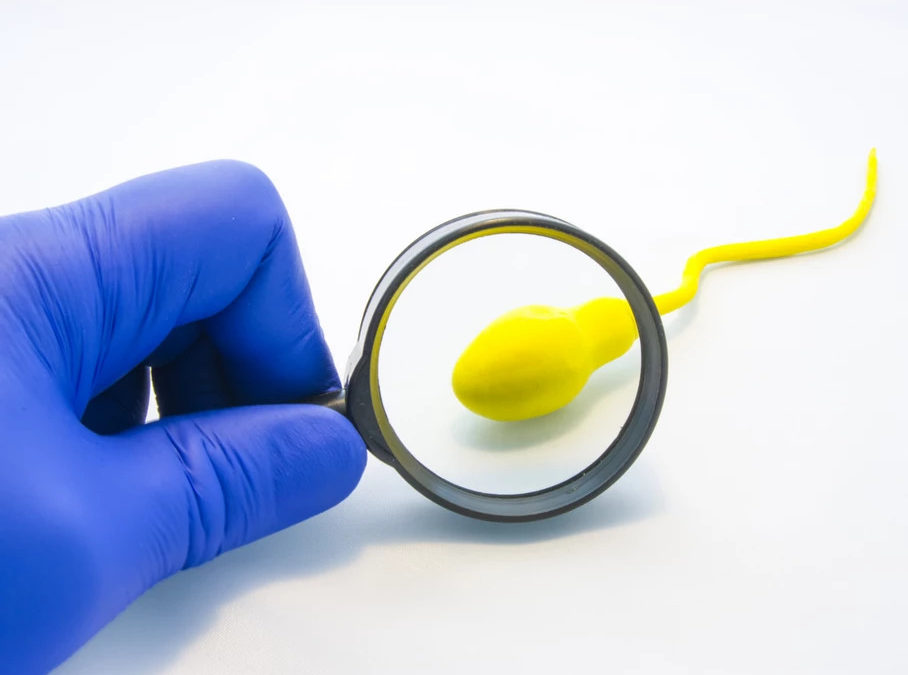Infertility affects an estimated 12-15% of couples globally; males are found to be solely responsible for 20-30% of cases and contribute to 50% of cases overall.
Over 80% of infertile men have decreased numbers of sperm with an associated decrease in motility and morphology (normal shape).
A small percentage of infertile men have normal sperm concentrations but poor sperm quality with a decrease in motility and/or morphology.
A small percentage of infertile men have normal sperm concentrations, motility and morphology.
The causes of male infertility can be divided into 4 main areas:
1) Endocrine (hormone) and systemic disorders account for 2-5% of cases. Any disease of the hypothalamus or pituitary (hormone-releasing areas of the brain) can cause infertility. Hypothalamic and pituitary disorders can be genetic or acquired due to tumors, autoimmune conditions, head trauma, vascular lesions such as aneurysm, other hormone disorders and their treatments, drugs such as testosterone, obesity and any serious illness or chronic nutritional deficiency.
2) Testicular defects in spermatogenesis (sperm production) account for 65-80% of cases; the majority of the time there is not an identifiable cause. Problems with sperm production may be caused by chromosome defects, congenital or developmental disorders such as Klinefelter syndrome or undescended testes or hormone receptor problems. Acquired disorders of the testes that may impair sperm production include varicocele (a dilation of spermatic veins in the scrotum), infections, drugs, radiation, environmental toxins, smoking, prolonged testicular high temperatures, antisperm antibodies (possibly from prior testicular injury) and systemic disorders such as chronic renal (kidney) insufficiency, malnutrition or sickle cell disease.
3) Sperm transport disorders account for 5% of cases-sperm are produced but not transported to the correct place. The epididymis is an important site for sperm maturation and an essential part of the sperm transport system. The vas deferens transports sperm from the epididymis to the urethra from which it is ejaculated. Abnormalities at any of these sites, particularly the epididymis or vas deferens can cause infertility. In addition, ejaculatory duct disorders and sexual disorders such as erectile dysfunction, premature ejaculation and infrequent vaginal intercourse may interfere with sperm being transported to the female reproductive tract.
4) Idiopathic male infertility accounts for 10-20% of cases-a normal semen analysis on multiple occasions and an apparently normal female partner.
A thorough workup is required to help identify the cause of male infertility. This is best accomplished by a urologist or other healthcare provider with experience evaluating male infertility. The workup includes a history and physical exam, at least 2 semen analysis tests (optimally at least 1 week apart and after 2-7 days of ejaculatory abstinence), a blood draw for hormone testing, possibly a scrotal ultrasound and genetic testing. There are several specialized sperm and semen tests being used by some fertility clinics and labs, however these tests lack standardization and evidence to support their routine use. Specialized sperm/semen testing is definitely an area with a lot of interest and ongoing research.
Treatment of male infertility is highly dependent upon finding the cause and whether the cause is correctable. For example, a hormone problem causing decreased sperm production may be corrected leading to improved sperm parameters or an obstruction of the epididymis may be surgically corrected. If sperm parameters cannot be improved, very often advanced reproductive technologies such as IVF with ICSI can be used to help a couple achieve pregnancy. In the most extreme cases where no sperm is being produced at all, a couple may need to use donor sperm.
I strongly encourage any couple having fertility problems to see a fertility specialist for a thorough evaluation. Male infertility is very common but requires the expertise of a provider skilled and experienced in this area as technologies for testing and treatment are constantly evolving.
References: Agarwal, A., Mulgund, A., Hamada, A., & Chyatte, M. R. (2015). A unique view on male infertility around the globe. Reproductive biology and endocrinology : RB&E, 13, 37. https://doi.org/10.1186/s12958-015-0032-1
UpToDate: Causes of male infertility
Authors: Bradley D Anawalt, MD, Stephanie T Page, MD, PhD
Section Editor: Alvin M Matsumoto, MD
Deputy Editor: Kathryn A Martin, MD
UpToDate: Approach to the male with infertility
Authors: Bradley D Anawalt, MD, Stephanie T Page, MD, PhD
Section Editors: Peter J Snyder, MD, Alvin M Matsumoto, MD
Deputy Editor: Kathryn A Martin, MD

